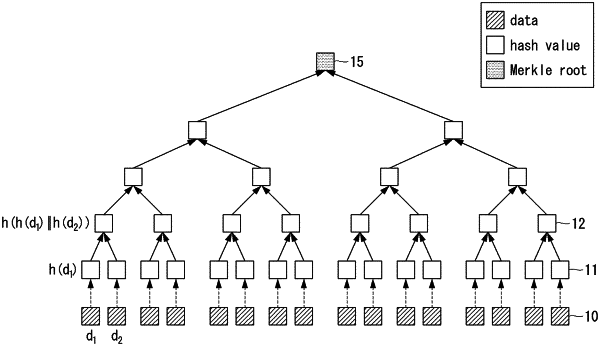| CPC G06F 16/2246 (2019.01) | 13 Claims |

|
1. A Merkle tree-based data management method comprising:
aligning data into two-dimensional square matrix;
calculating hash values of each node of the two-dimensional square matrix;
calculating hash values of each row of the two-dimensional square matrix;
generating an additional column with nodes having the hash values of each row;
calculating hash values of each column of the two-dimensional square matrix;
generating an additional row with nodes having the hash values of each column;
obtaining a Merkle path and an original Merkle root for verification target data, the Merkle path representing a pre-calculated hash value of a specific node among the nodes of the two-dimensional square matrix;
calculating hash values for the verification target data aligned in the two-dimensional square matrix;
calculating each hash value of a specific column in an additional row and a specific row in an additional column by concatenating a hash value of an arbitrary node of the two-dimensional square matrix and Merkle path values of remaining nodes of the specific row and the specific column including the arbitrary node;
calculating a Merkle root by concatenating a hash value of a specific column of the additional row with Merkle path values of the remaining nodes of the additional row and concatenating the hash value of the specific row of the additional column with Merkle path values of the remaining nodes of the additional column; and
verifying integrity of the verification target data by comparing the calculated Merkle root with the original Merkle root.
|